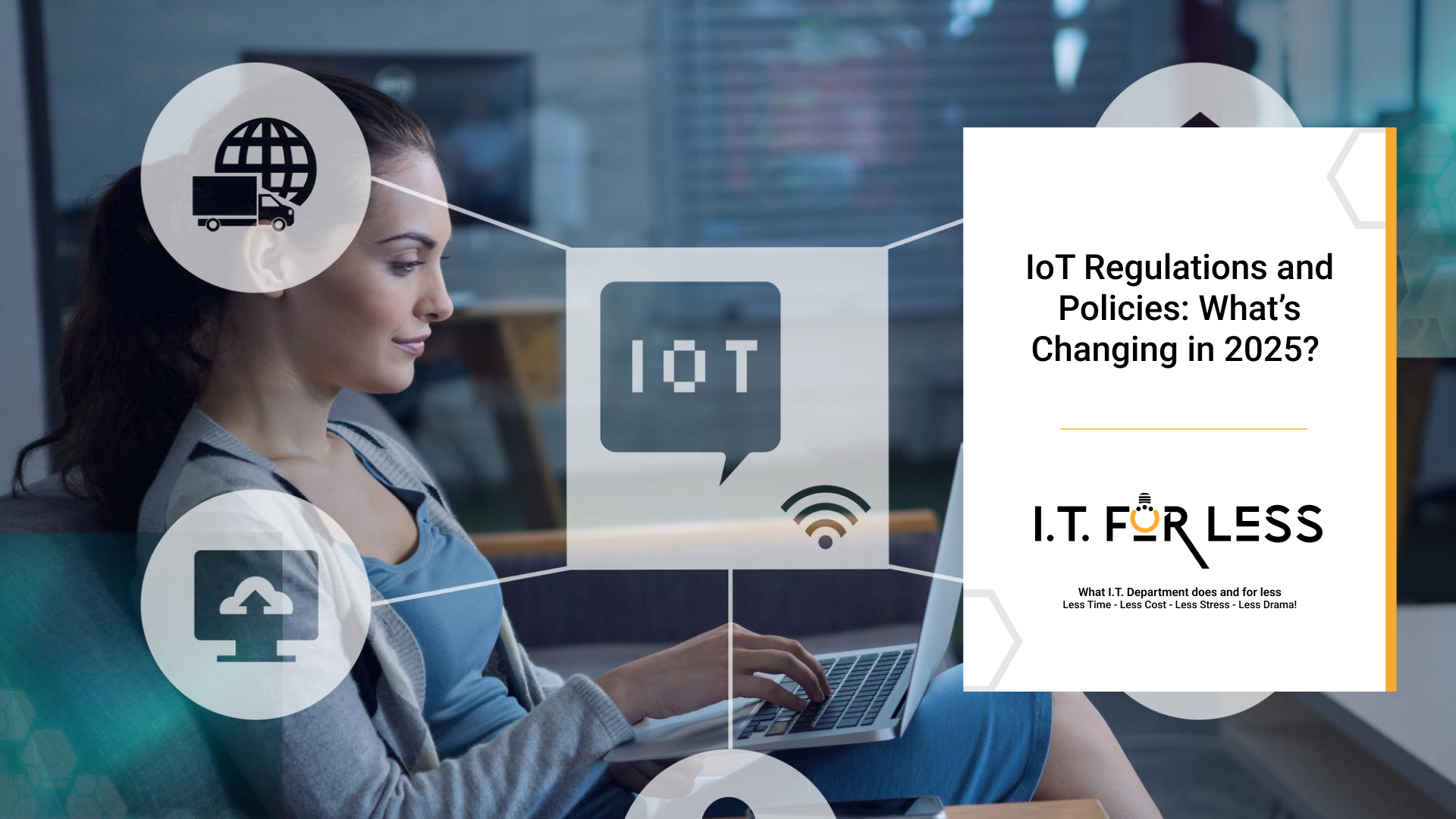The regulatory landscape for Internet of Things (IoT) devices moved from “warned-about” to actively enforced in 2025. Governments and standards bodies worldwide are tightening rules, publishing guidance, and launching labeling/certification programs so that connected devices are safer, more private, and more interoperable. If your business builds, buys, or deploys IoT, 2025 is the year to treat compliance as a strategic priority — not an afterthought.
The headline changes in 2025
- Consumer security labeling goes mainstream (U.S.). The U.S. government pushed the idea of a “Cyber Trust” label for consumer IoT—think “Energy Star for cybersecurity.” The initiative moved forward in 2025 with government-backed testing and voluntary labeling programs that vendors can apply for to prove basic security hygiene. This gives consumers an easy trust signal and creates a market incentive for secure-by-design devices. The Verge
- UK updates and clearer ICO guidance. The UK Information Commissioner’s Office published (and began updating) guidance specific to IoT products and services in mid-2025, reflecting new domestic laws and the Data (Use and Access) Act that affects how device data can be used and shared. The guidance stresses privacy-by-design, clear consent flows, and robust data governance for device makers and service providers. Hunton Andrews Kurth+1
- Europe tightens data-sharing rules (Data Act trajectory). The EU’s Data Act (and related digital strategy changes) continued to shape obligations for connected product manufacturers — especially around who controls device-generated data, portability, and access rights. In 2025 regulators signaled stronger enforcement and heavy penalties for non-compliance. Enterprises operating in Europe must reassess contracts and data flows. Digital Strategy EU+1
- U.S. federal focus on IoT compliance & standards. U.S. oversight increased in 2025 — including federal reports calling for stronger compliance monitoring and updated technical guidance from agencies like NIST. Expect more prescriptive baselines for device lifecycle management (secure onboarding, patching, vulnerability disclosure) and more public procurement requirements referencing those baselines. Aeris+1
What these changes mean for businesses
- Product manufacturers face higher bar for “secure by design.” Security features (unique device credentials, secure update mechanisms, encrypted comms) are becoming minimum market expectations. Certifications and labels will influence purchasing decisions. The Verge
- Data governance must be explicit. Laws like the EU Data Act and national rules require clarity on who owns, accesses, or must share data — so contractual terms, APIs, and user-facing disclosures need updating. Digital Strategy EU
- Procurement and vendor risk management will tighten. Buyers (public and private) are demanding proof: vulnerability management policies, audit reports, and evidence of secure update processes. Aeris
- Fines and reputational risk are real. Regulators are signaling enforcement — noncompliance can mean penalties and consumer backlash. Planning now reduces costly retrofits later. digital.nemko.com
Practical 2025 compliance checklist (start here)
- Map all IoT devices, data flows, and third-party services (who stores, processes, or accesses device data).
- Adopt a recognized baseline standard (ETSI EN 303 645 / NIST IoT guidance) and map gaps. NIST Computer Security Resource Center+1
- Implement unique device identities, secure boot, signed firmware updates, and encrypted communications.
- Create a documented vulnerability disclosure and patch-management policy (and a timeline for updates).
- Update contracts to cover data access, portability, liability, and compliance with regional laws (EU Data Act, UK Data Use and Access, US requirements). Digital Strategy EU+1
- If you sell consumer devices, track labeling/certification programs (e.g., Cyber Trust Mark) and plan lab testing if you’ll market in the U.S. or EU. The Verge+1
Quick risk-reduction wins (30–90 days)
- Enforce network segmentation for IoT so device compromises can’t easily spread.
- Turn on automatic update telemetry and verify update installation success rates.
- Run a short third-party security review of critical device vendors (firmware cadence, incident history).
Looking ahead
Regulators will continue refining rules and tying procurement to compliance. Expect more cross-border coordination (and therefore more jurisdictional complexity). The practical takeaway: treat IoT compliance as continuous engineering and legal work — not a one-off checklist.
Partner with I.T. For Less today and take the first step toward building a compliant IoT strategy that keeps your IT flowing as effortlessly as your ambition.
